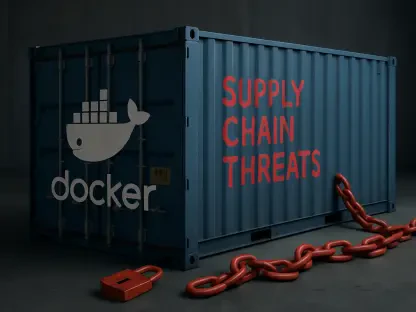In an era where data is often dubbed the new oil, European banks find themselves at a critical juncture, grappling with mounting concerns over who controls their most valuable asset, especially as geopolitical tensions simmer between the U.S. and the EU. With stringent regulatory demands like the General Data Protection Regulation (GDPR) in place, financial institutions across the region are reevaluating their reliance on American tech giants for cloud computing and artificial intelligence (AI) services. The fear of foreign access to sensitive data, coupled with potential non-compliance penalties, has sparked a notable shift toward European-based cloud alternatives. This transition isn’t just a reaction to immediate risks but a strategic pivot aimed at securing long-term digital autonomy. As the landscape of global technology alliances evolves, the move by these banks signals a broader push for resilience and control in an increasingly fragmented digital world, raising questions about the future of cross-border data flows and tech dependencies.
Understanding the Driving Forces
Data Sovereignty and Regulatory Pressures
European banks are increasingly wary of the implications of storing sensitive financial data with U.S.-based cloud providers, where legislation could potentially allow foreign governments to access critical information under certain conditions. This concern is particularly acute given the strict mandates of GDPR, which impose hefty fines for data protection breaches or non-compliance. The risk of falling afoul of such regulations has pushed major institutions like Deutsche Bank and BNP Paribas to seek alternatives that keep data within EU jurisdiction. Beyond mere compliance, this shift reflects a deeper anxiety about losing control over customer information in a climate of geopolitical uncertainty. Reports from the European Banking Authority highlight the urgency of diversifying tech dependencies to avoid vulnerabilities tied to international disputes or sudden policy shifts, emphasizing that reliance on a handful of providers could jeopardize operational stability in the long run.
A parallel concern amplifying this trend is the broader EU ambition to establish digital sovereignty as a cornerstone of its technological framework. Financial institutions are aligning with this vision by investing in local infrastructure and partnerships with European cloud providers like OVHcloud and Scaleway. Such moves are not just about mitigating legal risks but also about fostering trust among clients who demand assurance that their data remains protected under regional laws. The strategic pivot also serves as a hedge against potential disruptions stemming from trade disagreements or differing transatlantic approaches to privacy. As banks navigate this complex terrain, the focus on maintaining data within the EU underscores a proactive effort to balance innovation with security, ensuring they are not caught off guard by external pressures or regulatory scrutiny that could undermine their operations.
Geopolitical Tensions and Cyber Risks
Another significant driver behind the migration to EU cloud solutions is the escalating geopolitical friction between the U.S. and EU, which has heightened the perceived risks of depending on American tech infrastructure. European financial regulators, including the European Central Bank, have issued warnings about the potential liabilities of such dependencies in scenarios involving international sanctions or hybrid warfare tactics. The possibility of cyber threats exploiting these connections has become a pressing issue, prompting banks to reassess their exposure to foreign tech ecosystems. Industry discussions on platforms like X reflect a growing consensus that over-reliance on a single region’s providers could leave critical systems vulnerable to disruptions orchestrated by state or non-state actors in times of conflict.
Adding to these concerns is the recognition that cybersecurity in the financial sector must evolve to address increasingly sophisticated threats tied to global tensions. Initiatives like Cisco’s sovereign critical infrastructure, introduced recently, aim to provide secure, on-premises solutions tailored to the high-security demands of banking and AI applications. These offerings prioritize control over data flows, reducing the risk of unauthorized access during periods of international unrest. For European banks, adopting such technologies represents a dual strategy: safeguarding against cyber risks while aligning with the region’s push for technological independence. This multifaceted approach highlights the intricate interplay between security needs and geopolitical realities, as institutions strive to protect their digital assets in an unpredictable global environment.
Strategic Responses and Future Outlook
Partnerships with European Cloud Providers
In response to these mounting challenges, many European banks are forging strategic alliances with local cloud providers to ensure data remains under regional oversight. By partnering with companies like OVHcloud, financial institutions aim to mitigate risks associated with foreign data access while adhering to stringent EU regulations. These collaborations are not merely reactive but part of a broader effort to build robust digital ecosystems that prioritize security and compliance over global convenience. Major banks are investing heavily in infrastructure that supports this transition, recognizing that localized solutions can offer greater resilience against both cyber threats and geopolitical shocks. This trend signals a shift in mindset, where the value of sovereignty in data management is increasingly seen as a competitive advantage in the financial sector.
Beyond immediate risk mitigation, these partnerships also reflect a commitment to fostering innovation within the EU’s borders. By supporting homegrown tech providers, banks contribute to the development of a stronger regional digital economy, reducing dependency on external players. Hybrid cloud models, blending European and select international services, are gaining traction as a balanced approach, with encryption and local key management serving as critical safeguards against legal ambiguities. This strategic alignment with domestic providers not only addresses current regulatory and security concerns but also positions European banks to adapt more effectively to future challenges. As these efforts gain momentum, they are likely to reshape the technological landscape, creating a more fragmented yet potentially more secure framework for financial operations across the region.
Building Toward Digital Autonomy
The broader vision of digital autonomy underpins much of the current shift, with EU regulatory frameworks advocating for increased investment in domestic infrastructure and AI development. Recommendations from prominent think tanks emphasize the need for Europe to cultivate its own technological capabilities to counterbalance the dominance of U.S.-based providers. For banks, this translates into a long-term strategy of de-risking from concentrated tech dependencies, a sentiment echoed by research showing a significant portion of IT decision-makers in the region planning similar transitions due to geopolitical factors. The push for autonomy is not just about reducing risks but also about maintaining a competitive edge in a global financial market increasingly driven by digital innovation.
Looking back, the journey toward EU cloud solutions by European banks was marked by a clear recognition of the vulnerabilities tied to over-reliance on foreign tech giants. The steps taken—ranging from partnerships with local providers to the adoption of hybrid models—demonstrated a pragmatic approach to balancing immediate security needs with long-term strategic goals. As the region moved forward, the focus shifted to actionable investments in sovereign infrastructure and regulatory alignment, ensuring that data protection remained paramount. The emphasis on building resilient systems offered a blueprint for other sectors to follow, highlighting the importance of autonomy in a digitally interconnected world. With these foundations laid, the path ahead promised to prioritize innovation within a secure, regionally grounded framework, setting a precedent for navigating global tech challenges.









